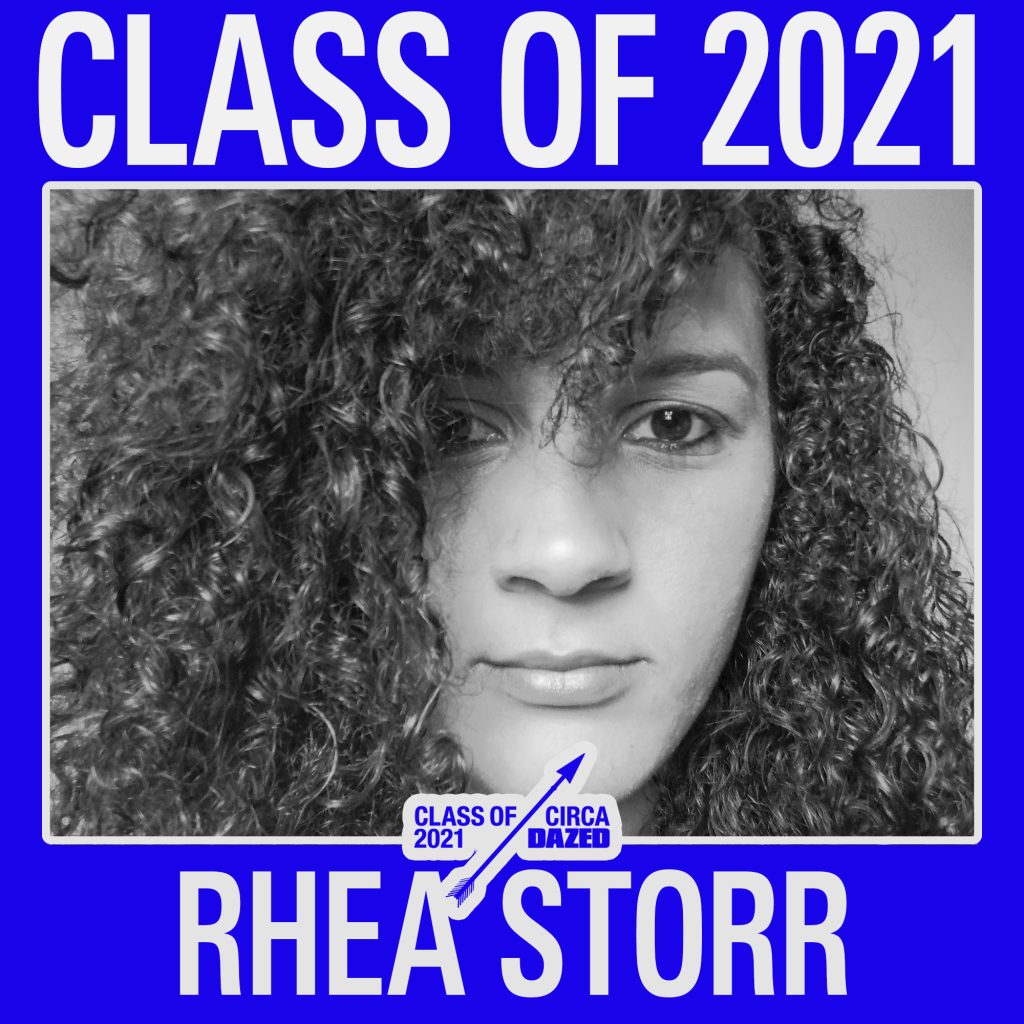Rhea Storr
I am an artist filmmaker of British Bahamian parentage who explores the representation of Black and mixed-race cultures. The gestures of Black women performing, masquerading as a site of protest and Black bodies in rural spaces are ongoing themes in my work. Previous work includes short films exploring the legacy of Josephine Baker’s Banana skirt, Junkanoo celebrations in the Bahamas, and Leeds’ West Indian Carnival. I am co-director of not nowhere an artists’ film co-operative, lead by people of colour, teaching predominantly analogue filmmaking techniques. I am also resident at Somerset House and program at Alchemy Film and Moving Image Festival.
Q: WHAT WAS YOUR ROUTE TO YOUR CURRENT ARTISTIC PRACTICE?
I completed an MA at the Royal College of Art with a focus on Contemporary Art Practice (Moving Image) in 2017. I was drawn to experimental filmmaking as a way of producing counter to traditional documentary language and wanted to experiment with form, line and colour. I have since been involved with a co-operative whose lineage is derived from the London Filmmakers Co-operative in the 1960’s. Working for the co-operative feeds into my practice of making and writing about non-dominant filmmaking forms which might contribute to a ‘Black Aesthetic’.
Q: CAN YOU IDENTIFY ANY ELEMENTS OF YOUR COMMUNITY OR COLLABORATORS THAT HAVE HAD A STRONG INFLUENCE?
I recently completed a new work, entitled For The Record, with academic, poet and filmmaker Phanuel Antwi. Taking our respective neighbourhoods, (Phanuel in Vancouver and me in London), we photographed sites of Black history at night. This formed the basis for a discussion around Black aesthetics to be transcribed to text and collectively re-edited before being performed again. I learnt a lot about the value of poetics as a type of refusal from being captured or held clearly. This poetics is clearly present in the voiceover for my submission. Although our experiences were markedly different we found a commonality through written references: Black thinkers such as Fred Moten, Wilson Harris and Edouard Glissant.
Q: HOW IS YOUR PROJECT TIED TO THE CIRCA X DAZED CLASS OF 20:21 THEME OF ‘COMMUNION’ ?
The project is entitled Bridge, an original interpretation of Audre Lorde’s phrase ‘hyphenated people.’ (She states… “we are the hyphenated people of the Diaspora whose self-defined identities are no longer shameful secrets in the countries of our origin, but rather declarations of strength and solidarity.”) Between one place and another I have used the Bridge as a metaphor for diaspora. Taking Bridges from London, UK and Nassau, Bahamas, there is an uneasy communion of place which does not exist in physical space but is told through a diaspora narrative. I’m interested in communion which might happen though a shared experience across cultures. Being able to make a bridge between can be a privilege and diaspora bodies communicate with the world through movement. Glass, mirror, stone and water are imaged in the textures of Super 8mm film, a DIY aesthetic, laden with the evocation of care and nostalgia, where the surface is used as a strategic way of moving between. As a confusion of time and place, Bridge is part of a larger work entitled Square, Bridge, Garden, Hill (Three Sisters) which loosely takes the empty carnival routes of London and Nassau as the backdrop for a fictional narrative by three women in public Space.
Q: HOW WOULD THE CIRCA PRIZE OF £30,000 IMPACT YOUR FUTURE PRACTICE?
The prize would help enormously in making a more ambitious work. Having made short films under 20 minutes I would relish the chance to make something longer without the conditions that grants of this size often come with. I have started research for a much larger work on West Indian centres/Caribbean associations in the UK identifying up to 20 centres to potentially work with.
I want to take risks and develop my skills with analogue film further, which in turn will feed back into the skills taught at the co-operative. I also want to develop moving image work which exists in the gallery space. My work is often about the physical presence of a body and I’d like to further explore embodiments away from the cinema screen. (I am therefore excited to see the work on the CIRCA screens too). This will require more studio space.
FOLLOW RHEA STORR ON INSTAGRAM
